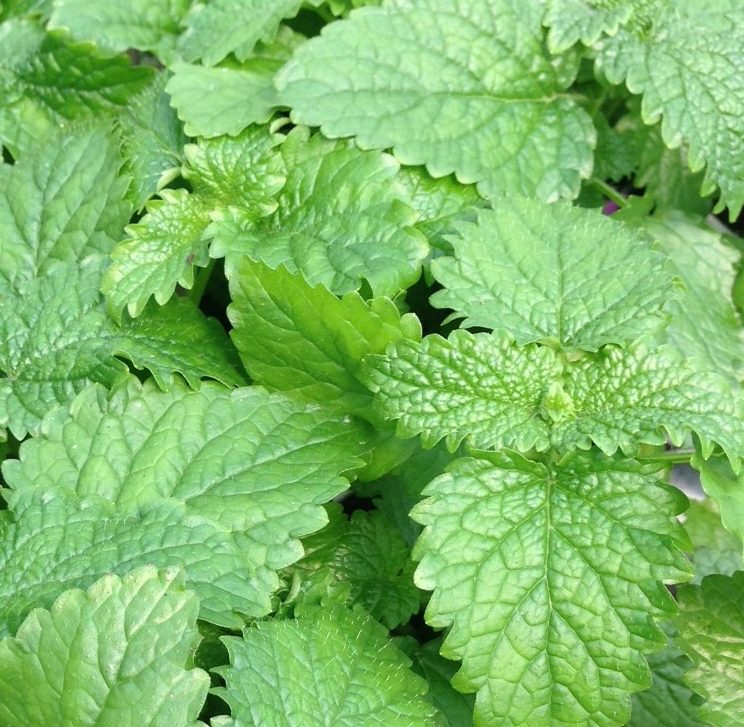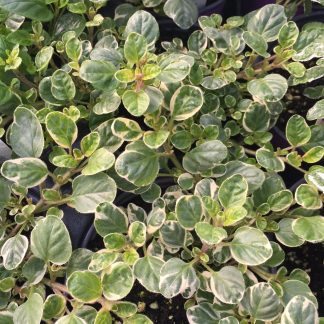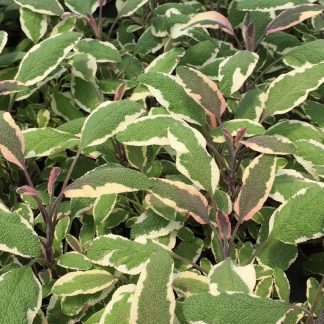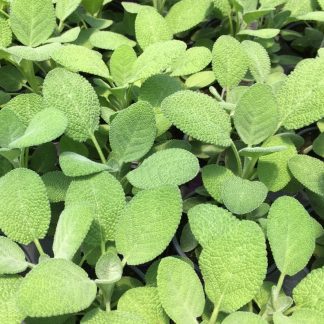Description
Melissa officinalis (Lemon Balm): Bright Lemon Scent, Gentle Power, Easy Care
Why We Love Lemon Balm
We all reach for plants that feel like a breath of fresh air. Lemon balm, also known by its botanical name Melissa officinalis, is that plant. It greets you with a clean lemon scent the moment you brush the leaves. It grows with ease. It keeps giving from spring to frost. In other words, it’s a small herb with big charm.
The look is soft and friendly. Heart-shaped leaves ripple with fine texture. New growth glows light green, then deepens to a rich, glossy tone. Tiny white blooms appear in summer and draw bees with quiet joy. You get beauty, fragrance, and pollinators in one tidy clump. That’s smart gardening.
Lemon balm is a hardy perennial in many regions. It returns after winter with fresh energy. It fills out fast. It takes well to trimming. You can plant it once and enjoy it for years with simple care. We love it in raised beds, border edges, and patio pots where the scent is easy to enjoy as you pass by.
The uses are many. Fresh leaves lift iced water, tea, and lemonade. They brighten fruit salads, fish, chicken, and simple desserts. A quick syrup made with lemon balm turns sparkling water into a sunny mocktail. A handful in a sachet perfumes drawers. Most of all, a warm cup in the evening feels like a calm exhale at the end of the day.
This herb is also a good neighbor. It invites bees but shrugs off deer and rabbits. The lemony oils help mask scents that pests follow, so nearby plants benefit too. Instead of fuss and sprays, you get a natural helper that works while it grows.
Quick highlights
- Fragrance: Fresh lemon scent on every touch
- Habit: Bushy, 18–24″ tall; spreads by clump and self-seeding
- Lifespan: Perennial in USDA Zones 4–9; grow as an annual elsewhere
- Light: Full sun to part shade (afternoon shade in very hot summers)
- Soil: Well-drained, loamy, moderately fertile
- Water: Even moisture; more during hot, dry spells
- Pollinators: Bees love the summer bloom flush
- Wildlife: Generally deer and rabbit resistant
- Uses: Teas, drinks, salads, fish, fruit, desserts, syrups, vinegars, sachets
Plant Details & Easy Care
Great results start with a simple plan. Choose a bright site with morning sun and good airflow. Lemon balm thrives in full sun in cooler regions. In hot climates, give it a little afternoon shade. That balance protects leaf color and keeps flavor fresh.
Soil & planting
Work in compost to loosen heavy ground. Aim for soil that drains well and holds steady moisture. A pH near neutral (about 6.0–7.5) is perfect. Plant starters at the same depth they grew in the pot. Space plants 18–24 inches apart so air can move and leaves stay dry after rain. In containers, use a high-quality potting mix and a pot with drainage holes. A 10–12 inch pot fits one plant comfortably.
Watering rhythm
Keep soil evenly moist while roots establish. After more than a few weeks, let the top inch dry between waterings. Deep, less-frequent watering builds stronger roots. Mulch with shredded leaves or bark to hold moisture and steady soil temperature, but keep mulch a few inches away from the stems.
Feeding
Lemon balm does not need heavy fertilizer. Mix in compost at planting. If growth slows midseason, give a light feed with a balanced organic fertilizer. Too much nitrogen makes soft growth with weaker flavor. We want bright, lemony oils, so we keep feeding gentle.
Pruning & shaping
Trim plants often. Pinch the tips above a leaf pair to keep clumps low, dense, and leafy. If stems begin to bloom and you want more leaves, shear the plant back by one-third. It will flush with new, fragrant growth in 1–2 weeks. Regular trims also help prevent self-seeding. If you like the summer flowers for bees, let part of the plant bloom and keep the rest in leaf.
Overwintering
In Zones 4–9, cut stems to a few inches after frost and mulch lightly. The crown will rest, then push new shoots in spring. In colder zones, grow lemon balm as an annual or overwinter a pot in a cool, bright window. It tolerates light indoor care, but bright light is key. A south-facing window or a small grow light keeps it compact and happy.
Pests & problems
This herb is usually trouble-free. Give it sun, airflow, and well-drained soil. That’s the recipe. If you see aphids, rinse them off with a firm spray of water. If leaves get powdery in muggy weather, a midseason haircut and better spacing fix it fast. Soggy soil is the main no-no. Good drainage stops root stress before it starts.
Container tips
We love lemon balm in pots near paths and chairs, where you can pinch a leaf as you walk by. Choose a roomy container, water when the top inch is dry, and trim often to keep a neat dome. Repot each spring with fresh mix if the plant feels tired or the pot is crowded. You can divide bigger clumps into two or more pots. Share one with a friend. That’s the spirit of herb gardening.
Specs at a glance
- Botanical name: Melissa officinalis
- Common name: Lemon Balm
- Type: Hardy perennial herb
- Height/Spread: 18–24″ tall x 18–30″ wide (with trimming)
- Light: Full sun to part shade
- Soil: Well-drained, moderately rich; pH ~6.0–7.5
- Water: Moderate, consistent moisture
- Hardiness: USDA Zones 4–9
- Growth rate: Fast; trim to manage
- Notable traits: Aromatic foliage, pollinator friendly, deer/rabbit resistant
Flavor, Fragrance, and Everyday Uses
Lemon balm shines in the kitchen. The flavor is bright but gentle, like lemon zest without the bite. It layers well with mint, basil, and citrus. It lifts sweet and savory dishes without taking over. Think of it as an easy note of sunshine you can add in seconds.
Simple ways we use it
- Tea and iced tea: Steep fresh leaves for 5–10 minutes. Enjoy warm or pour over ice. Add honey or a lemon slice if you like.
- Water upgrade: Toss a few sprigs into a pitcher with cucumber or berries. It tastes like a spa day.
- Fruit & desserts: Chiffonade leaves over melon, strawberries, peaches, or yogurt. Stir into shortbread dough. Whirl into sorbet.
- Savory dishes: Mince and add to fish, shrimp, or chicken right before serving. Fold into compound butter and melt over grilled vegetables.
- Syrup & vinegar: Simmer a quick simple syrup for mocktails or lemonade. Infuse white wine vinegar for dressings.
- Aromatics: Dry bunches for sachets, potpourri, and drawer liners. Fresh scent, simple joy.
Harvest like a pro
Pick in the morning after the dew dries. That’s when oils are highest. Snip stems just above a leaf pair. The plant will branch there and grow back fuller. For the best flavor, harvest before heavy bloom. If you need a big batch, shear by one-third and let it regrow. You can harvest again in a few weeks.
Storing your harvest
Use fresh leaves the same day for peak aroma. For longer storage, air-dry small bundles out of direct sun, then crumble and jar them. You can also freeze chopped leaves in ice cube trays with a little water or lemon juice. Label the cubes and drop them into drinks or pans all year.
Garden design ideas
Plant lemon balm along paths where brushing the leaves releases scent. Tuck it beside stepping stones near a seat or gate. Pair it with purple basil, chives, thyme, and calendula for a cheerful herb bed. Use it at the edge of raised beds to soften lines. In containers, match it with strawberries for a sweet, useful duo.
Good neighbors & gentle guarding
The lemony oils can help confuse pests. Place lemon balm near tender greens or peppers to add aromatic cover. It’s not a force field, but it helps. Meanwhile, the blooms call in bees for your whole plot. That’s a win-win.
A note on spread
Lemon balm grows fast and can self-seed. Keep plants tidy with regular trims. If you want tight control, grow it in a pot or use an edging strip in beds. A quick shear after flowering also keeps new seedlings from popping up where you don’t want them.
What you receive
Choose from seed packets for larger plantings or healthy starter plants when in season. Starters give you a head start for tea and kitchen use right away. Seeds are perfect for filling a new herb bed at low cost. Either way, you’re set for months of bright, lemony harvests.
Why this herb belongs with us
We pick plants that make your space smell great, look fresh, and feel welcoming. Lemon balm does all three. It’s easy. It’s generous. It’s joyful. After more than one season, it becomes a friendly habit—pinch a sprig, inhale, smile, repeat.
Bring Home the Zest—Plant, Pinch, Enjoy
Let’s grow something that lifts every day. Lemon balm is simple to plant, simple to love, and simple to use. It asks for sun, steady moisture, and a few trims. In return, it gives bright fragrance, soft texture, and a harvest you’ll reach for again and again. Instead of chasing fussy herbs, we can grow one that thrives with us. Add Melissa officinalis to your bed or a pot by the door, and feel that clean lemon note each time you pass. That’s the kind of small, steady joy that makes a garden feel like home.




